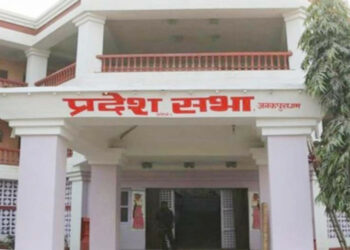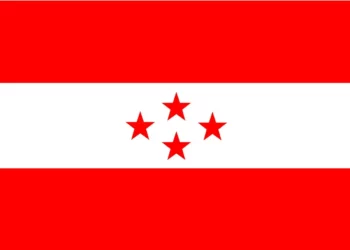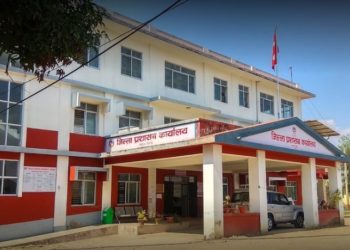India and Nepal could play a very crucial role in Energy Cooperation in South Asia to promote sustainable economic prosperity and foster mutually beneficial energy linkages in the region. This is possible because Nepal has a very high level of hydropower potential whereas India has the expertise, experience, resources and willingness to cooperate.
The technical and economically feasible hydropower potential of Nepal has been estimated at 83,000 and 42,000 Megawatts (MW).
Nepal’s big (4) river and some southern river basins have a total hydropower potential of 72,450 MW theoretically comprising 18,750 MW of Kosi river basin, 17,950 MW of Gandak, 28,840 MW of Karnali (Ghaghra), 3,840 MW of Mahakali (Sarda) and 3,070 MW of other southern rivers. But despite this, according to Nepal Electricity Authority,
Nepal’s electricity production capacity has reached only 2,577.48 MW. Of the total installed capacity, about 2,492.95 MW is connected to the national power grid and the remaining 24.53 MW is off-grid supply.
The share of hydropower in the total generation capacity of Nepal is still far less than the potential and it is felt that with the current pace of development, it would not be able to realize the target of 7,300 MW of generation capacity by 2025.
The sign of the willingness to jacking up cooperation in the hydroelectric power of both countries is now clear since they entered into a fresh agreement last year for the West Seti and Seti River projects.
Nepal could seek cooperation for developing its hydropower at a greater scale for both domestic supplies as well as exports.
India has the 5th biggest hydroelectric power generation capacity in the world. It had created an installed utility-scale of hydropower capacity of 46,000 MW as of March 2020.
It has also an additional generation capacity of 4,683 MW from small hydropower units. India’s own hydroelectric potential is estimated at 148,700 MW at a 60% load factor. India produces about 160 TWh (excluding small hydro) with an average capacity factor of 38.71%.
If India and Nepal cooperate in Hydropower production, they could not only fill the gap in their domestic power demand and supply but also help the other South Asian countries to overcome power shortages.
Although the two countries have cooperated in the development of hydropower, their cooperation has remained far less than the optimum in view of their mammoth potential.
It is more than five decades since the two countries started cooperation to develop hydropower together, but the progress is slow.
According to a study by the Confederation of Indian Industries (CII), the slow growth in power cooperation between the two countries may be attributed to a lack of pace and direction in the cooperation dialogue, complexities arising due to the power-water nexus, absence of private participation in the process of non-availability of physical infrastructure.
Added to that are challenges thrown by regional geopolitics. The two countries need to jack up their hydroelectric power cooperation by mutually trying to evolve an implementable roadmap for the same and overcome the impediments.
As a new government has assumed power in Nepal, it is expected that both countries would make efforts to realize the potential of their natural complementarities.
Nepal has huge water resources and the required topography adjacent to India and other South Asian countries. India has resources, expertise and experience apart from scalable and shared resources.
It is amazing information for anybody that Nepal has over 6000 rivers and rivulets across the country and has a steep topography suitable for hydropower generation.
India has today more than USD 600 billion of foreign exchange reserves and government and private companies with a great track record of power generation and development of transmission lines.
There are others at various stages of discussion or development including Pancheshwar, Sapta Kosi, Kamla and Bagmati, Arun-3, etc. The informed people are abuzz with optimism that the two countries are now in the “ready set-go mode.”
Many of these private power companies are in search of investment opportunities. The complementarity between the two countries needs to be harnessed to its maximum for a win-win outcome for both of them and the whole of the South Asian region.
The sign of the willingness to jacking up cooperation in the hydroelectric power of both countries is now clear since they entered into a fresh agreement last year for the West Seti and Seti River projects.
On August 18, 2022, the Investment Board of Nepal signed a Memorandum of Understanding (MoU) with India’s National Hydroelectric Power Corporation (NHPC) Limited to develop West Seti and Seti River projects with a combined capacity of 1200 MW.
Last November, the Nepal Electricity Authority submitted a fresh list of hydropower projects to export power to India. The projects include upper Tamakoshi (456 MW), upper Bhotekoshi (45 MW), Kaliganga (144 MW), Marshyangdi (69 MW), Middle Marshyagndi (70 MW) and Chamelia
(300 MW). When all the power plants run at full capacity in the monsoon, Nepal would likely have a surplus of about 500 MW. Its peak demand is expected to remain around 1700 MW while total production would reach around 2300 MW by mid-July.
These are good omens and signify a new beginning.
In the past, Nepal completed several hydropower projects including Pokhra (1 MW), Tirsuli (21 MW), West Gandak (15 MW) and Devighat (14.1 MW).
There are others at various stages of discussion or development including Pancheshwar, Sapta Kosi, Kamla and Bagmati, Arun-3, etc. The informed people are abuzz with optimism that the two countries are now in the “ready set-go mode.”









Comment